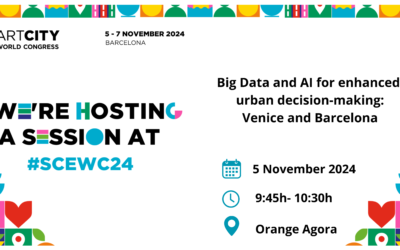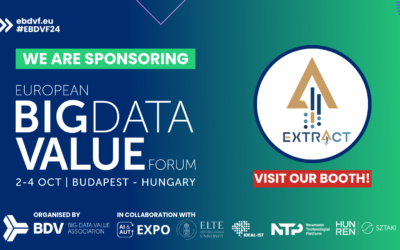Delivering a data-driven open-source platform integrating cloud, edge and HPC technologies for trustworthy, accurate, fair and green data mining workflows for high-quality actionable knowledge
Objectives
Enable the development of complex and secure data mining workflows
Develop novel data-driven orchestration mechanisms to efficiently deploy and execute data mining workflows
Deliver the EXTRACT software platform and demonstrate its benefits in two use cases
Fully exploit the performance capabilities of the compute continuum to effectively address extreme data characteristics (high volume, variety, velocity, veracity) holistically
Foster the adoption of EXTRACT technology by industrial and academic communitie
Use cases
Personalized Evacuation Routing (PER) System
A Personalized Evacuation Routing (PER) System will serve to guide citizens in an urban environment (the city of Venice) through a safe route in real time.
The EXTRACT platform will be used to develop, deploy and execute a data-mining workflow to generate personalized evacuation routes for each citizen, displayed in a mobile phone app, by processing and analysing extreme data composed of Copernicus and Galileo satellite data, IoT sensors installed across the city, 5G mobile signal, and a semantic data lake fusing all this information.
Transient Astrophysics with a Square Kilometer Array Pathfinder (TASKA)
The Transient Astrophysics with a Square Kilometer Array Pathfinder (TASKA) case will use EXTRACT technology to develop data mining workflows that effectively reduce the huge amount of raw data produced by NenuFAR radio-telescopes by a factor of 100. This will allow the populating of high-quality datasets that will be openly accessible to the astronomy community (through the EOSC portal) to be leveraged for multiple research activities.
Optimizing Compute Continuum Workflows with COMPSs Orchestration
The EXTRACT project tests its technology on the TASKA and PER use cases that make use of the entire compute continuum (edge, cloud, and High-Performance Computing (HPC) resources). Workflows orchestration is a key project activity that ensures that tasks are executed...
EXTRACT’s monitoring platform: The infrastructure behind the use cases
The EXTRACT project is an innovative project with two different use cases with the same challenge of integrating data for actionable knowledge. Despite their differences, both of the use cases, the Personalized Evacuation Route and the Transient Astrophysics with a...
Transforming Crisis Management in Venice Through Innovative EXTREME DATA Solutions
The city of Venice is the site of the EXTRACT project's Personalized Evacuation Route (PER) use case focuses on testing the project's cutting-edge extreme data mining technology across the compute continuum. Venice was chosen due to the unique challenges it presents,...
EXTRACT @SCEWC ’24: Big Data & AI for urban decision-making
The EXTRACT project will play an active role in the 2024 Smart City Expo World Congress, the biggest and most influential event for cities and urban innovation. Every year, leaders from global companies, governments and organizations participate to move cities...
EBDVF 2024- EXTRACT Joins DATANEXUS for booth & session
The EXTRACT project will share the technology behind its solutions for harnessing extreme data across the compute continuum at the 2024 European Big Data Value Forum. We are joining six fellow innovative projects that make up the DataNexus cluster of EU-funded...
HiPEAC 2025 WS: Advancing the compute continuum
ACCEPTED WORKSHOP-DETAILS COMING SOON! The emerging paradigm of edge computing involves a connected and distributed ecosystem of highly heterogeneous computing elements, spanning from the edge of the network, near end-devices, to public or private centralized cloud...





